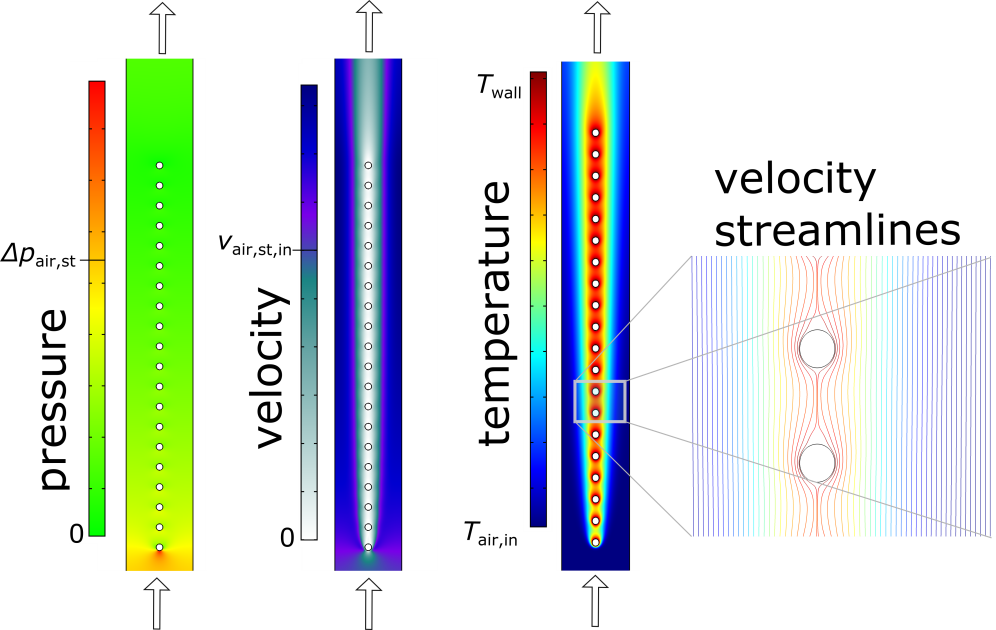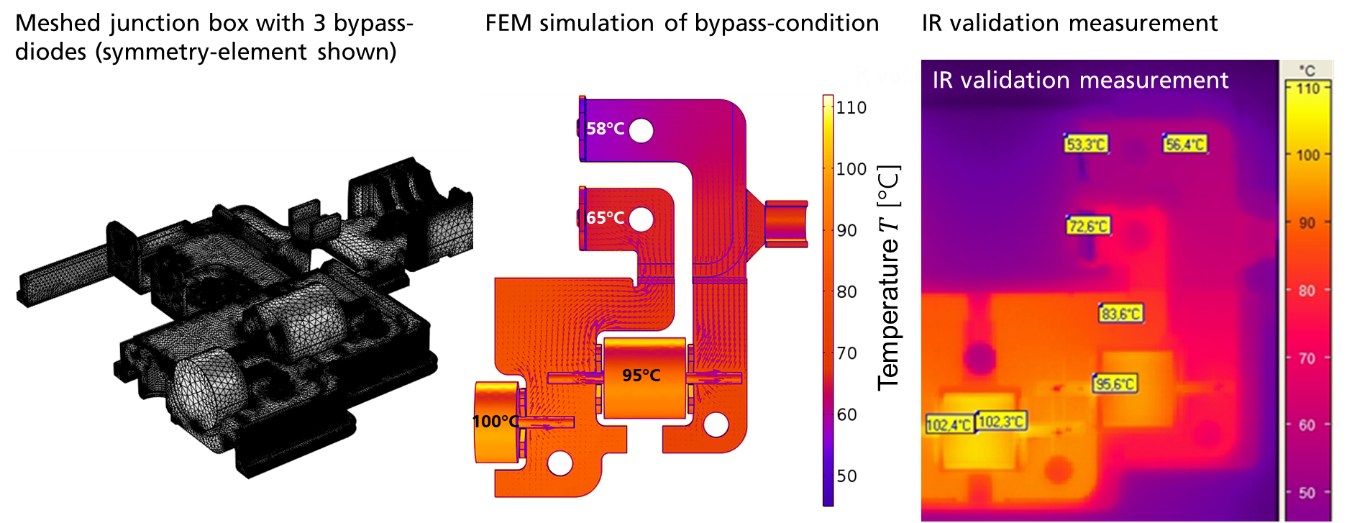Efficient heat transport, or heat transfer, is a focus of numerous projects across a wide range of our research activities at Fraunhofer ISE. The applications are analyzed both experimentally and simulatively.
Heat transport processes are simulated differently depending on the type of transfer. The calculations are based in each case on spatially resolved partial differential equations. Pure heat conduction, e.g. in solids, is solved by a heat conduction equation (in simplified form Fourier's law); free or forced convection is calculated coupled with a flow simulation; heat radiation is calculated on the basis of surface properties and temperatures (e.g. Stefan-Boltzmann law). The investigated media exist in all classical aggregate states (solid, liquid, gaseous) and also undergo phase changes during the simulations due to the process.
The software Comsol Multiphysics®, OpenFOAM and Ansys Fluent / Ansys CFX are available for Fraunhofer ISE for the simulations.


